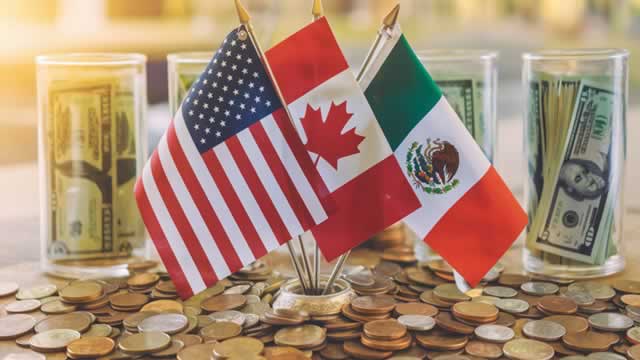The U.S. Dollar’s Slide: Inflation Expectations and the Fed’s Role
The U.S. dollar’s recent slide in value against other major currencies has been a topic of much discussion in financial circles. While some attribute this trend to trade tensions and the strength of other currencies, JPMorgan analyst Meera Chandan offers a different perspective:
Inflation Expectations and the Fed
According to Chandan, the primary driver of the U.S. dollar’s decline isn’t trade policies but rather the Federal Reserve’s (Fed) indifference to rising inflation expectations. She explains that the Fed’s commitment to maintaining low interest rates, despite signs of inflationary pressures, has led investors to question the value of holding U.S. dollars.
Impact on Consumers
For consumers, a weaker U.S. dollar can have both positive and negative effects. On the one hand, it makes U.S. exports more competitive on the global market, which could lead to increased sales and potentially lower prices for American consumers. However, it also means that imported goods will become more expensive, as the cost of those goods in foreign currencies will be higher when converted to U.S. dollars.
- Higher prices for imported goods
- Boost for U.S. exporters
Impact on the World
The weakening U.S. dollar can have far-reaching consequences for the global economy. For one, it can lead to increased demand for other currencies, potentially boosting their values. Additionally, it can make it more expensive for countries to repay debts denominated in U.S. dollars, which could create financial instability in some regions.
- Increased demand for other currencies
- Financial instability for debtor countries
The Fed’s Dilemma
The Fed faces a difficult decision: maintain low interest rates to support economic growth or raise them to combat inflationary pressures. Chandan argues that the Fed’s current stance is contributing to the U.S. dollar’s decline and could have broader economic consequences. However, raising interest rates too soon could stifle economic growth.
Conclusion
The U.S. dollar’s recent slide is a complex issue with many contributing factors. While trade tensions and currency strength play a role, JPMorgan analyst Meera Chandan asserts that the Fed’s indifference to rising inflation expectations is the primary driver. This trend could have significant impacts on consumers and the global economy, making it a topic of ongoing discussion in financial circles.
As consumers, we may see higher prices for imported goods, but we could also benefit from increased sales for U.S. exporters. However, the potential financial instability for debtor countries could create challenges for the global economy. The Fed’s decision to maintain low interest rates could be contributing to the U.S. dollar’s decline, but raising them too soon could stifle economic growth. This dilemma underscores the importance of careful consideration and collaboration between financial policymakers and economists.
As always, stay informed and stay curious!





